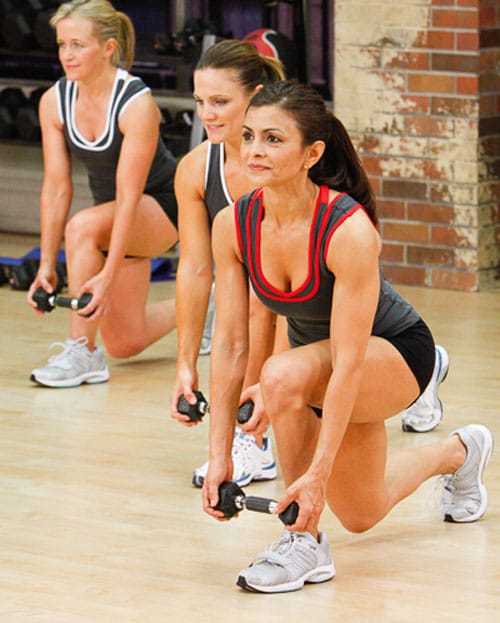Most people think of inflammation as a response to infection or injury. When you have a cut or scrape that gets infected it turns red, swollen and angry looking. This is an example of acute inflammation, the response your body makes to an injury. But there’s another type of inflammation that takes place “behind the scenes.” This is a smoldering, low-grade kind of inflammation that you can’t see but damages tissues inside your body slowly over time.
In fact, chronic inflammation is now proposed as an underlying cause of a variety of health problems including heart disease, type 2 diabetes, autoimmune diseases, and cancer. That’s why you hear so much about the importance of eating an anti-inflammatory diet to avoid fueling inflammation.
Eating whole, unprocessed foods, lots of vegetables and avoiding pro-inflammatory habits like smoking is one way to keep inflammation in check – but what about exercise? What role does it play in reducing inflammation?
The Anti-Inflammatory Benefits of Exercise
One blood marker for inflammation is a protein called C-reactive protein or CRP. Doctors sometimes check CRP levels on patients they suspect have a source of hidden inflammation that may be impacting their health. Because heart disease has an inflammatory component, an elevated CRP is viewed as a risk factor for atherosclerotic heart disease, although less significant than other factors like blood pressure and elevated lipids.
All in all, an elevated CRP level suggests the presence of low-grade systemic inflammation of the type that’s linked with atherosclerotic heart disease and other health problems like type 2 diabetes. As such, CRP serves as a marker for low-grade inflammation that you can measure through a blood test.
How is exercise linked with inflammation? A study published in the Journal of the American College of Cardiology looked at the effects of exercise on CRP. What they found was a bout of vigorous exercise caused a short-term increase in CRP. This suggests that exercise has a pro-inflammatory effect, at least short-term. This isn’t surprising since an intense workout places lots of stress on your body.
What’s more interesting is the study also showed regular vigorous exercise reduces CRP and other markers for inflammation, suggesting long-term exercise training has an anti-inflammatory effect by lowering the production of chemicals called cytokines that are linked with inflammation.
One pro-inflammatory cytokine that goes up after a workout is called IL-6. The amount of IL-6 released is proportional to workout intensity, duration and how much muscle mass you used during your workout. It’s IL-6 that stimulates the release of CRP by your liver. That’s why CRP is elevated for a short time, up to a day or two, after a long or intense workout.
Here’s the good news. Not only do CRP and IL-6 drop after you’ve completely recovered from your workout but regular physical exercise helps keep both of these inflammatory markers in check. In addition, exercise increases the release of anti-inflammatory chemicals that help protect your body against inflammation.
Another Way Exercise Keeps Inflammation in Check: Effects on Fat Tissue
At one time people believed fat tissue was simply a storage depot for fat. Now it’s clear that fat cells produce cytokines that are linked with inflammation. Far from being passive storage units for energy, fat produces chemicals and hormones including the hormone leptin that helps control appetite. One way obesity increases the risk for type 2 diabetes and heart disease is through the increased release of inflammatory cytokines.
Obesity is a disease marked by inflammation and this chronic low-grade inflammation contributes to the increased incidence of obesity-related health problems. Exercise helps here too by reducing body fat. As you shed excess body fat, fewer of these inflammatory chemicals are released because there are fewer fat cells around. Research shows that shedding even a few pounds of body fat reduces inflammation.
Exercise also reduces insulin resistance, a common obesity-related problem. One way exercise improves insulin sensitivity and reduces insulin resistance is due to its effect on inflammatory cytokines. Some studies show inflammatory cytokines make cells less responsive to insulin. What’s interesting is insulin resistance itself increases inflammation, creating a vicious cycle that can be hard to break without healthy lifestyle habits.
Exercise and Inflammation: Exercise Reduces Inflammation in the Setting of a Healthy Lifestyle
Exercise is one tool in your anti-inflammatory arsenal, but don’t forget about the importance of a healthy lifestyle and diet. Certain dietary components fuel inflammation including trans-fat, high levels of omega-6 fats, found in abundance in soybean oil and corn oil, the oils most commonly used to make processed foods. Sugar indirectly contributes to inflammation by worsening insulin resistance. The best way to avoid stoking the flames of inflammation is to eliminate processed foods from your diet and eat more antioxidant-rich fruits, vegetables, and spices.
The Bottom Line
Inflammation is a good thing when you have an injury. When you have a burn, cut or bug bite, the inflammatory process sends white blood cells into the area to help mend the damage. It’s not such a good thing when it comes from excess body fat, lack of exercise and a poor diet. Add exercise to the list of things you can do to reduce this type of low-grade inflammation that underlies a number of health problems including type 2 diabetes, heart disease, autoimmune problems, and cancer.
References:
Breaking Muscle. “What Kind of Exercise Improves Inflammation the Most?”
Journal of Applied PhysiologyPublished 1 April 2005Vol. 98no. 1154-1162DOI: 10.1152/japplphysiol.00164.2004.
IDEA Health and Fitness Association. “Exercise Reduces Inflammation Long-Term”
J Am Coll Cardiol. 2005;45(10):1563-1569. doi:10.1016/j.jacc.2004.12.077
JASN November 1, 2004 vol. 15 no. 11 2792-2800
Arch Immunol Ther Exp (Warsz). 2013 Apr;61(2):119-25. doi: 10.1007/s00005-012-0210-1.
Related Articles By Cathe:
What Role Does Exercise Play in Reversing Pre-diabetes?
Exercise Doesn’t Just Improve Lifespan – It Enhances Health Span


